History of Dormitz
- Emigration
from Oberfranken in the 19th Century
-
Emigrants from Dormitz
Some facets of the history of a Franconian village
With this site I want to make accessible
some information, which are only available in German.
Any comment is highly appreciated: e-mail
Special thanks to John J. Knetzger/ Wisconsin for reviewing and correcting this page.
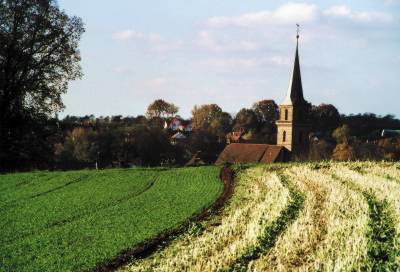
Second World War
On April 15, 1945 American tanks stood on the hills above Dormitz,
ready to pound the village if they would meet resistance.
One salvo hit behind the houses at the railway station, a second one came
down before the village.
But the village was vacated by the inhabitants and Dormitz suffered no
damage.
Eleven years after that fateful day, a Madonna was inaugurated at the same spot on the hill (Dormitzer Kirchberg) where the first tanks stood. /10/
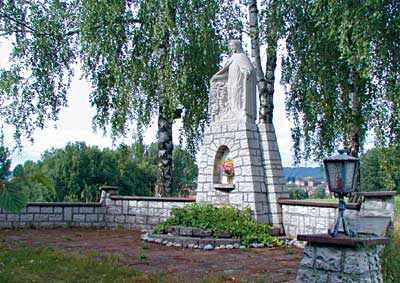
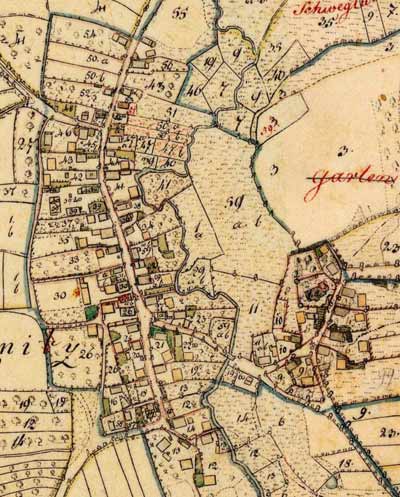
Map: © Bayerisches Landesvermessungsamt München
(move mouse over map and click to enlarge)
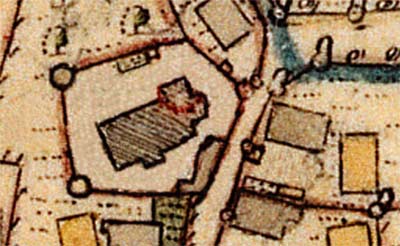
The outlines of the old Kirchenburg (a fortified church) with its fortification walls clearly show two towers, a third one originally could be found in the east wall.
The southwest tower was torn down together with a part of the wall in 1824, when the school house was built.
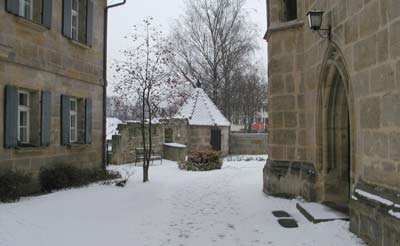
Some remnants of the northwest tower still can be seen today.
The building on the
left side is the old
school house, which
was used as a school until 1966.
The building on the
right side is the church.
Emigration in the
19th century (more)
Between 1835 and 1890
nearly 80.000 people emigrated from the district of Oberfranken.
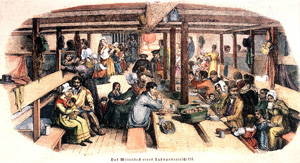
(approximately 1847)
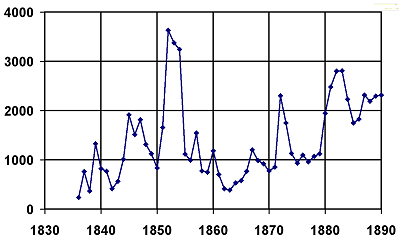
The following inhabitants
of Dormitz left Bavaria between 1829 and 1909 /5/
Beck, Brandis, Dorn, Dresel, Eisenbrand, Förtsch, Frank, Friedrich,
Frohmann, Greif, Häfner, Hofmeyer, Hollsteiner, Holzmann, Knetzger,
Lövi, Männlein, Minderlein, Mirsberger, Nägel, Nepf, Posen,
Priester, Rehm, Regenfuß, Rosenheimer, Schmeier, Schmidt, Stirnweiß,
Striegel, Uhlfeld, Wiegärtner, Wieseckel (more)
Between 1792 and 1815
a series of wars caused misery, suffering and death. /2.115-120/
First Coalition
(1792 to 1797)
On April 20, 1792
the revolutionary France declared war against Austria and its ally Prussia.
During this war, both French and Austrian troops passed this region several
times. In August 1792 the two armies stood opposite here in this region,
finally the French had to withdraw.
The year 1796 was especially bad for Dormitz, as several quarterings,
troop passages and plunderings took place.
Second Coalition (1798 to 1801)
This campaign again brought many quarterings and troop passages, as well
as several battles and encounters between the French and the allies.
On Dec 19, 1800 the French withdrew to the area around Neunkirchen, the
Austrians following them.
December 21 was a hard battle day with cannon thunder all over the valley
of the Schwabach.
The French withdrew towards Erlangen, partly via Dormitz and partly via
Ebersbach.
On December 31 there was another battle near Neunkirchen. According to their
own statement the French had 1500 dead and wounded.
During these days the inhabitants of Dormitz had to suffer a lot.
One consequence of this war is that Dormitz belongs to Bavaria since 1802.
Third & Fourth Coalition (1805 to 1807)
This time, Bavaria stood on the side of Napoleon. Once again, there were
many troop passages and quarterings.
Only one major battle took place in this region: near Eschenau between
French and Austrian troops on October 20, 1805.
As a reward for fighting with the French during this war, the Kurfürst
of Bavaria was allowed to take the title "King of Bavaria" since
January 1, 1806.
As a result of the July 7, 1807 peace accord, the former Prussian inhabitants
of Dormitz became French subjects.
Fifth Coalition (1809 to 1811)
In 1809 Austria attacked Bavaria. Again warlike operations in this region.
Although there was no war in 1810/1811, Dormitz had to suffer a lot from
quarterings.
Napoleon's war against Russia:
30,000 Bavarian and 30,000 Italian troops moved towards Russia in the
spring of 1812. This troop passage lasted three weeks and during these
days there was a never ending flow of soldiers through the main street
of Dormitz.
German Liberation War (1812 to 1815)
On March 27, 1812 Prussia declared war against France, and other states followed.
Although there was no fighting in this region, the population suffered
severely from troop passages and quarterings.
After this series
of wars, Dormitz could not carry the burdens any longer and fell and sold
the forests.
The neighboring Neunkirchen stated that its burden of the war amounted
to 34,000 fl.
In addition, in the year 1797 half of the cattle fell victim to an epidemic,
and in the years 1816/17 there was dramatic rise in prices due to crop
failures.
In these years many farmers had to sell their properties because of excessive
debts.
Memorial slab of Hans Schmid /2.222/
He was miller at the Langenbruck-mill and died on February 1, 1721.
Size of slab: 2,30m x 0,90m x 0,15m
This slab was discovered in 1937 during the renovation of the church; it was a part of the floor. Today it is standing near the church.
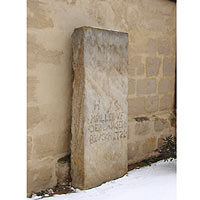
MÜLLER UF
DER LANGEN
BRUCKH 1721
The inhabitants of Dormitz were plundered a second time by the Imperial troops under Tilly on February 16, 1632. After a third attack, this time by the Swedish under Obrist Reinhard von Rosa, the village was nearly completely destroyed. It is said that only three of the approximately 60 houses outlasted.
Only a few families, which lived in Dormitz before 1630 survived. The families Derfus, Döppel, Knetzschger and Engelhardt were the only ones, which were mentioned in the directories of the Waldamt Sebaldi from both 1611 and 1653.
It took more than 100 years until the estates were built up and populated again.
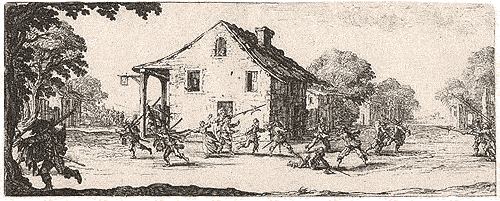
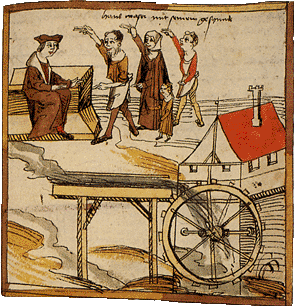
Three water mills
can be found close to Dormitz: /2/
Haberhofer Mühle, Langenbrucker Mühle and the Gaber Mühle.
They were used for milling grain and cutting logs.
The Gaber Mill is
one of the oldest mills at the Schwabach and was constructed between 1050
and 1100. The other two were built around the year 1100.
The miller and his family take an oath that they will always mill properly and for a proper wage.
Volkacher Salbuch
approx. 1500
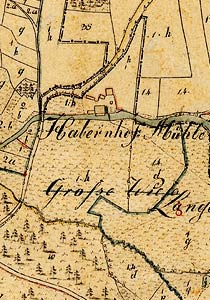
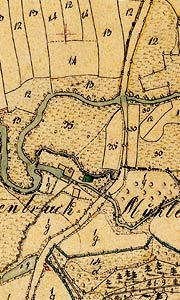
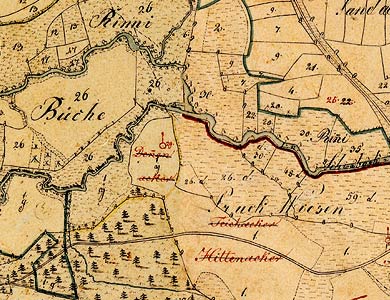
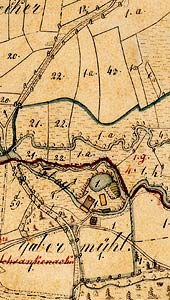
This and a slightly younger document were signed by "Sigefridus de dorenbenze" resp. "Sigefrid de dornbenze". /1.6/
The roads and the natural watercourses were very important for the first settlers, so Dormitz was founded at a side road coming from Neunkirchen and a brook, called Altbach or Brandbach and close to the Schwabach river /3.20/ (move mouse over map to see an overview)
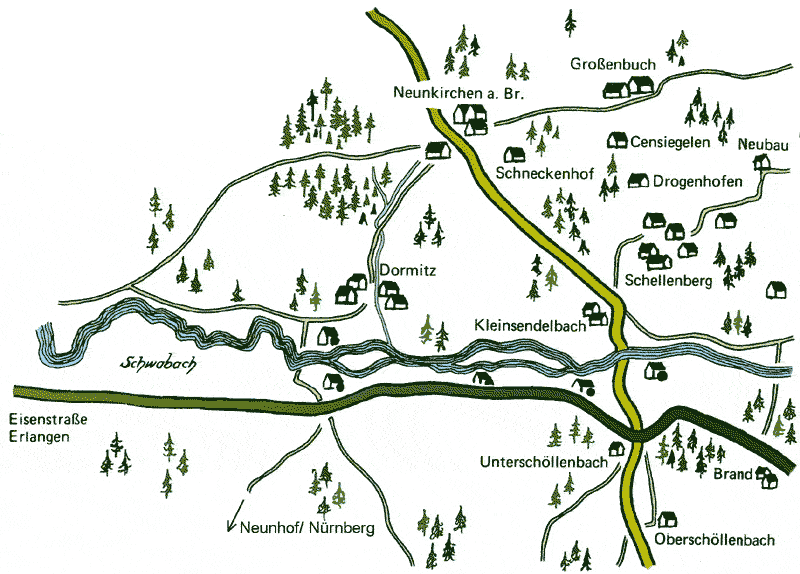
At the beginning of the last millennium the region southeast of the imperial palace Forchheim was covered with primeval forest with military roads and trade routes connecting cities like Bamberg and Regensburg.

References
/1/ Die Kirche zu Dormitz und ihre Kunstschätze. Georg Betke. Inaugural-Dissertation zur Erlangung der Doktorwürde der Hohen Philosophischen Fakultät der Friedrich-Alexanders-Universität Erlangen, Erlangen 1914
/2/ Chronik des Dorfes Dormitz. Wilhelm Held, Brand 1967, 3. Auflage 1992, Editor: Gemeinde Dormitz
/3/ Erlanger Oberland - eine Heimatgeschichte von Wilhelm Held. Erlangen 1976, Selbstverlag
/4/ Auswanderungswesen in Bayern, G. Krieg, Sonderabdruck des Verins für Socialpolitik, 52. Band
/5/ Staatsarchiv Bamberg, Auswandererkartei
/6/ Wanderungsbewegungen in und aus Franken im 19. Jahrhundert. Klaus Guth. Jahrbuch für fränkische Landesforschung 49 (1989)
/7/ Fremdheitserwartung und Fremdheitserfahrung bei den
deutschen Amerikaauswanderern im 19. Jahrhundert. Peter Assion. in
Kulturkontakt, Kultirkonflikt/ herausgegeben von Ina-Maria Grevius. Frankfurt/
Main (1988)